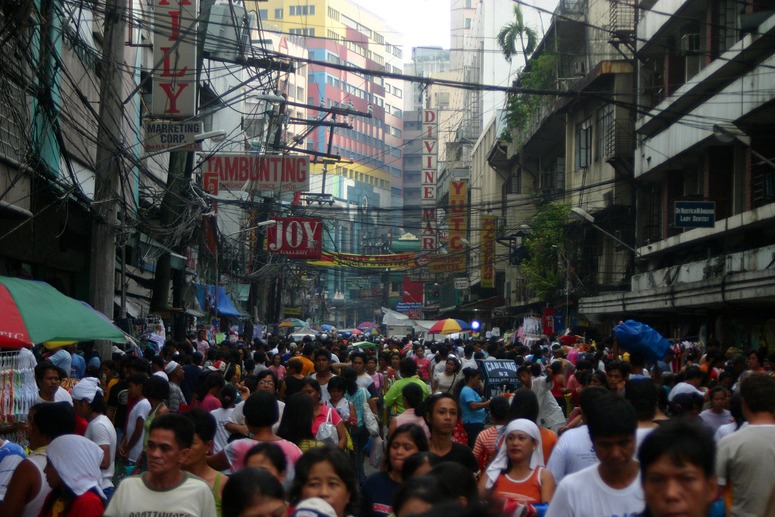Over the course of 2011, there have been several reports on urbanization, densification, ecosystem function, and/or the preservation of nature. The prominence of these topics (or, rather, meta-topic, since they are so closely linked) this year reflects our struggle to find space for an ever-growing human population while maintaining natural habitats that not only perform valuable services--providing crops, keeping flood waters at bay, etc.--but also simply make us happy.
This week, a new study joins the fray, and, if you are a lover of green spaces, its findings are depressing. It reports that, across the 13 largest cities in the UK, the total area devoted to green habitat has declined since 2000, when the national policy shifted to encourage urban development in areas such as gardens, parks, and allotments. These and other "brownfield sites"--abandoned and underused facilities considered available for re-use--were seen as alternatives to expansion into the wider countryside; in other words, the government promoted densification, at the expense of green space, over sprawl.
(Bird's-eye-view of some London allotments)
The research was conducted by collaborators from the University of Sheffield, Peking University, and the University of Kent, who used a combination of different satellite imagery techniques to evaluate temporal changes between 1991 and 2008 in the extent of developed and undeveloped areas in Bournemouth, Portsmouth, Brighton, Bristol, London, Birmingham, Leicester, Nottingham, Sheffield, Liverpool, Manchester, Leeds, and Newcastle. To look for correlations between land use change and population growth, they also used census and survey data to evaluate shifts in population size and the number of dwellings within each of these 13 study cities over the same time period. In addition to looking at broad changes over time, the researchers broke their study period into two parts: before the government-recommended shift in urbanization strategy, and after.
Between 1991 and 2006, all but one of the study cities (Manchester) experienced increases in the amount of green space--despite concurrent growth of both human population numbers and the number of dwellings within city limits. In particular, London, Birmingham, and Newcastle, saw notable rises in proportion of green space. However, this potentially encouraging news was swept aside by results of separate analyses on the pre- and post-policy change periods. The bulk of positive green space changes occurred prior to 2001, since which time urban centers have become markedly less "natural." Nine of the 13 cities have experienced reductions in green space since 2001, since when there have also been increases in the numbers of dwellings per city, along with decreases in average household size (a trend recently bemoaned by the Royal Institute of British Architects).
(Aerial view of Manchester, showing a few secluded bits of green. This was the only city not to experience net increases in green space during the 1991-2006 period.)
One of the most notable patterns emerging from the data is a strong latitudinal gradient: Since 1981, southern cities (e.g., Brighton, Bournemouth, and London), which have the least amount of green habitat, have generally experienced the greatest increases in number of dwellings and total amount of built-up area. On the other hand, northern cities (e.g., Sheffield, Liverpool, and Newcastle) have generally experienced the least. This pattern mimics one that has also been found across Europe as a whole.
Since announcement of the new urbanization policy at the turn of the century, urban developers have exceeded targets--for instance, increasing densities to 40 housing units/hectare rather than the recommended 30 units per hectare. In 2010, new policy changes were announced that may cause a shift in focus from densification to sprawl; however, it is not yet clear whether this has begun to influence the amount of green space available in and around cities like the 13 examined here.
(Signs of densification can be found all over the world)
The current study shows that land use is both dynamic and highly sensitive to changes in policy. Thus, it can be hard to make long-term predictions about urban habitats; although we know about biological processes and are increasingly well-informed about how they are impacted by human disturbance, it is not easy to make projections about ecosystem services when planning policies could lead to dramatic changes in short periods of time. Perhaps even more disturbing is our lack of knowledge on the long-term repercussions of our current choices. What are the effects of urban growth on ecosystem services? How will the mental health of urban residents be affected by a dearth of accessible green spaces? Additional research is clearly in order, along with innovative solutions to problems associated with population growth and urbanization.
---
Dallimer, M., Tang, Z., Bibby, P.R., Brindley, P., Gaston, K.J., and Davies, Z.G. 2011. Temporal changes in greenspace in a highly urbanized region. Biology Letters 7:763-766.
Thanks to the following websites for providing the images used in this post:



No comments:
Post a Comment